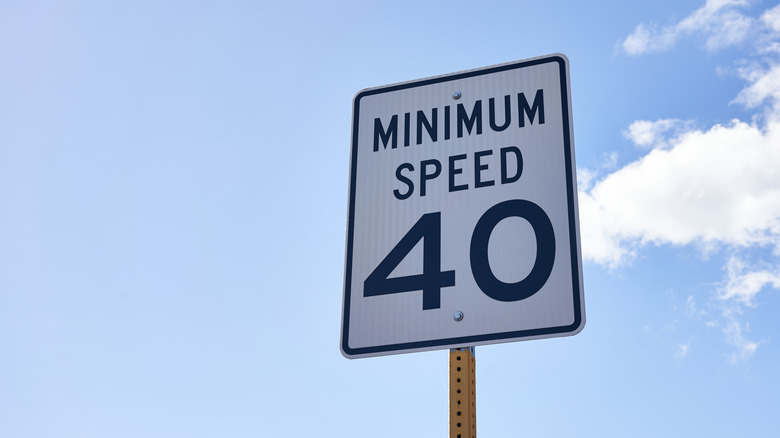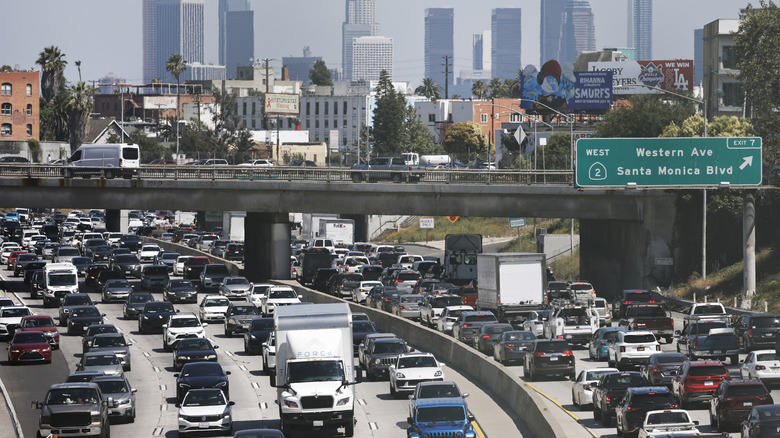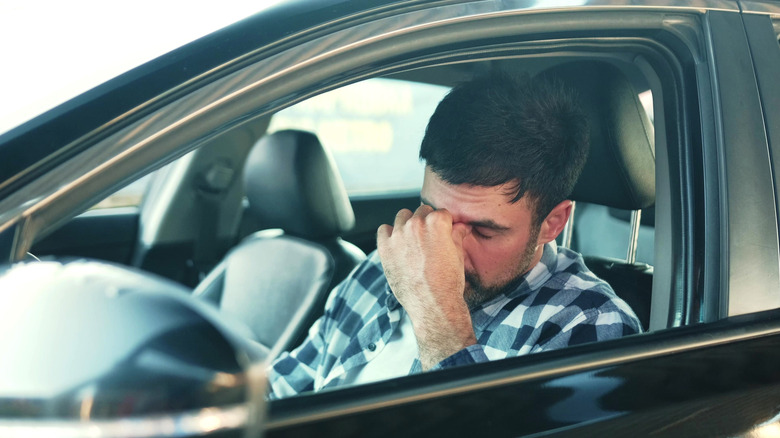Is It Illegal To Drive Under The Speed Limit? Here's What You Should Know
Back in 1901, Connecticut became the first U.S. state to impose maximum speed limits for motorized vehicles by limiting the speed to 12 mph in cities and 15 mph on country roads. Fast forward to the 1970s and the fuel crisis, then President Richard Nixon signed a nationwide speed limit of 55 mph. The speed limit was seen by many drivers as a way for the government to limit freedom, while others deemed it a necessary safety precaution.
No matter the viewpoint, it was a move that forever changed how Americans think about driving. Speeding issues almost always involve a driver going too fast, and historically, there weren't many regulations setting a minimum speed. However, that doesn't mean driving under the speed limit is always legal. In most states in the U.S., if going too slowly impedes the normal flow of traffic, it may result in a traffic violation.
Interstate driving laws and minimum speed regulations
According to a study published in Transportation Research, 25 states post the minimum speed limit on Interstate freeways, with the most common limit being 40 mph. These are typically used for very busy road sections where going too slowly carries a serious risk of impeding the flow of traffic. Some highways even come with a specific minimum speed limit for the left lane only in order to reduce the risks of accidents when driving too slowly in the passing lane.
It's also worth noting that some states have specific statutes against impeding traffic. If a driver travels at an excessively slow speed and fails to yield to faster-moving traffic on a multi-lane road, or if a slower driver does not use turnouts to let faster vehicles pass, such conduct will likely be considered illegal. While towing, all these regulations mentioned above still apply, while the maximum towing speed is usually about the same or a bit less than regular posted speeds, but these differ from one state to another.
However, the law does allow drivers to travel at speeds that would typically cause disruptions to the normal flow of traffic if such speeds are necessary for safe operation. As such, during bad weather, when visibility is limited, or if there are road hazards present, drivers should reduce their speed in accordance with the conditions.
Why driving too slowly can be dangerous and expensive
The Federal Highway Administration notes that, according to a 1964 study, the chances of crashing are the lowest for vehicles traveling near the average speed of traffic, while those driving both faster or slower faced a sharply increased risk of ending up in an accident. This means that reducing speed differentials directly correlates with a more consistent flow of vehicles and safer traffic for everyone. For instance, driving too slowly in a no-passing zone can create dangerous bottlenecks. It can catch other drivers off guard and increase the likelihood of rear-end collisions. This is because the greater the speed disparity between two vehicles, the less reaction time drivers have to respond safely and keep a safe following distance.
If your slow driving causes a problem for other drivers, this is a traffic violation, and you could face fines of about $15 to $250, depending on your state. You might also get points on your driving record. And if it causes a traffic accident, then you're looking at larger penalties, and you could be sued for damages.


